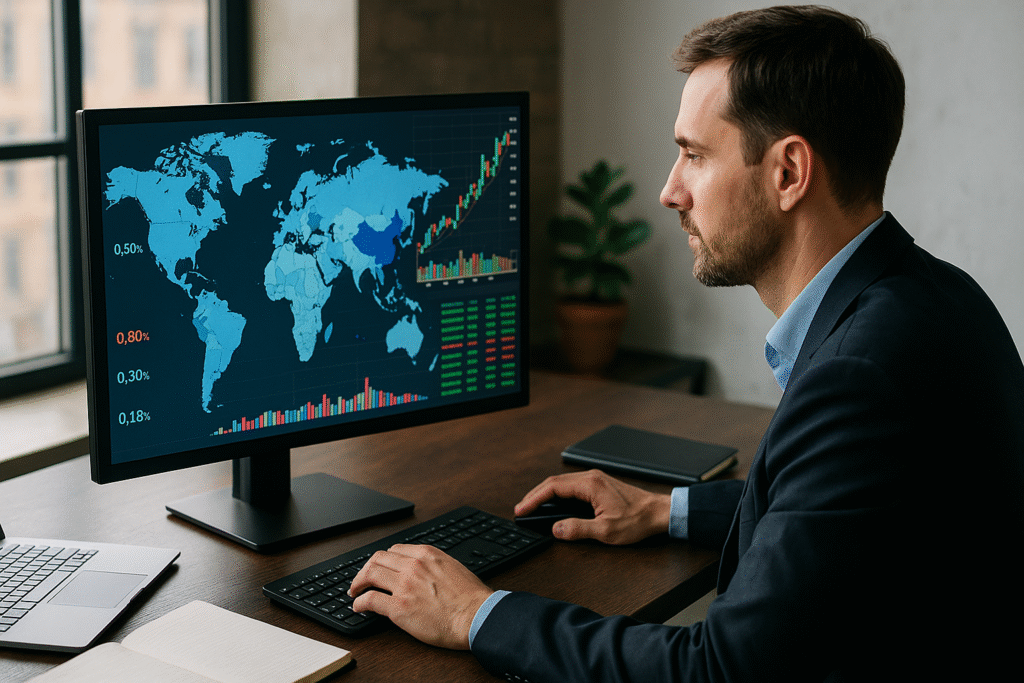How to Invest Beyond the US: Key Steps, Risks, and What to Watch For
Learn how to invest beyond the U.S. with practical steps, strategies, and tips to manage risks. Check out all the details!
Investing Beyond the US: How It Works and What You Need to Consider

For decades, American investors have focused primarily on opportunities within the United States. The U.S. market is vast, dynamic, and home to many of the world’s leading companies.
Yet, as global markets expand and emerging economies mature, diversifying beyond U.S. borders has become not only a strategy for growth but also a way to manage risk.
Investing internationally can open doors to new sectors, currencies, and innovations, but it also introduces new challenges that every investor should understand.
Why Invest Internationally?
The main reason to invest outside the U.S. is diversification. Even though the American economy represents roughly a quarter of global GDP, more than 70% of potential investment opportunities lie elsewhere.
By adding international exposure, investors can reduce dependency on the U.S. economic cycle and gain access to regions experiencing faster growth, such as Southeast Asia, Latin America, or Africa.
Global diversification can also balance your portfolio. When U.S. markets slow down, other economies might perform better, helping stabilize overall returns.
Additionally, international markets may offer attractive valuations compared to U.S. stocks, which are often priced at a premium due to high investor demand.
Step 1: Define Your Strategy and Goals
Before buying international assets, clarify your objectives. Are you looking for long-term growth, income through dividends, or protection against inflation? Your investment horizon and risk tolerance will guide which countries and asset types make sense.
For example, if you seek growth, you might consider emerging markets such as India or Vietnam.
For stability, developed markets like the U.K., Japan, or Germany may be better options. Defining these parameters helps you avoid impulsive decisions based on short-term trends.
Step 2: Choose the Right Vehicle
There are several ways to invest internationally, each with different levels of complexity and cost:
- Exchange-Traded Funds (ETFs): the easiest and most popular way to gain exposure. Global or regional ETFs allow investors to buy a basket of international stocks or bonds through a single transaction;
- Mutual Funds: actively managed international funds can offer professional guidance but typically come with higher fees;
- American Depositary Receipts (ADRs): these are foreign company shares traded on U.S. exchanges, allowing investors to access global brands like Toyota or Nestlé without dealing with foreign stock markets directly;
- Direct Investments: advanced investors may choose to buy stocks directly on foreign exchanges, though this often requires a global brokerage account and involves currency conversions.
Each method comes with different tax implications, fees, and liquidity levels, so consider your comfort with complexity before proceeding.
Step 3: Understand Currency and Political Risks
When investing abroad, returns are not only affected by company performance but also by currency fluctuations.
If the U.S. dollar strengthens against a foreign currency, your investment returns could shrink when converted back into dollars, even if the underlying asset performs well locally.
Political and regulatory risks also vary by region. Sudden policy changes, trade restrictions, or unstable governments can impact market performance.
Always research a country’s political and economic climate before investing and consider spreading your exposure across multiple regions to reduce risk.
Step 4: Monitor Economic Indicators and Global Trends
International investing requires staying informed about global events. Economic indicators such as inflation rates, interest rates, and GDP growth can have significant effects on foreign markets.
Likewise, geopolitical tensions, natural disasters, or shifts in trade policy can move markets quickly.
Pay attention to long-term global trends as well. Growth in renewable energy, digital infrastructure, and artificial intelligence is transforming economies worldwide.
Step 5: Balance and Reassess Regularly
Once you’ve built your international portfolio, periodic rebalancing is essential. Global markets can shift dramatically, and what worked one year may not perform the next.
Review your holdings at least annually to ensure your asset allocation still matches your goals and risk tolerance.
You might find that a strong dollar or changing market dynamics have altered the weight of your international positions.
Adjust as needed, either by adding to underrepresented markets or trimming those that have grown too large.
Final Thoughts
Investing beyond the U.S. can be a powerful way to diversify your portfolio and capture growth from dynamic global economies.
However, it requires careful planning, consistent monitoring, and an understanding of new types of risk.
Start small, educate yourself on each market, and consider using diversified funds or ETFs to ease into international exposure.
With the right strategy, investing globally can strengthen your portfolio’s resilience and open the door to opportunities that the U.S. market alone cannot provide.





